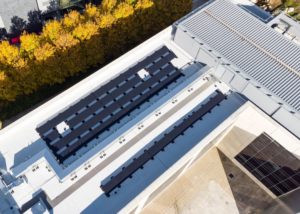The session sparked insightful discussions on how we view sustainability, how it impacts businesses, and what actions we can take to drive positive change.
Here are four key takeaways from the day:
Challenges and opportunities
We started the morning by drawing on the United Nations’ 17 Sustainable Development Goals as a guiding framework. Article 11, which focuses on creating inclusive, safe, resilient, and sustainable cities and human settlements, served as a focal point for the conversation.
Despite the prevalence of buzzwords like “Circular Economy,” there’s often confusion about their practical implications. FM professionals play a crucial role in guiding clients—both internal and external—towards sustainable practices. This involves clarifying objectives, educating stakeholders, and collaborating to achieve shared goals.
The discussion emphasised the need to shift focus from solely investing in new technology to maximising the potential of existing resources, such as buildings.
Education and awareness
A recurring theme throughout the event was the importance of education in driving change. Many acknowledged a lack of understanding among businesses regarding FM responsibilities and the steps needed to reduce carbon emissions. Addressing this knowledge gap is essential for progress.
Communication and engagement
To influence meaningful change, buy-in from all stakeholders is imperative. This involves building trust, emphasising the global significance of environmental challenges, and making sustainability relatable. Effective communication, grounded in practical examples and real-world experiences, is key to engaging stakeholders.
Infrastructure and investment
There’s a perceived lack of action from government bodies and this perception poses challenges to progress. While legislation exists, people question how effective it is, and this is largely due to the inadequacy of current infrastructure to support sustainability initiatives. Urgent action is needed to address this gap and ensure this translates into tangible results.
Ultimately, the goal is to empower businesses to make informed decisions that balance ecological and financial considerations. Incremental changes, no matter how small, can collectively make a significant impact on sustainability efforts.
As FM professionals continue to navigate the complexities of sustainability, it’s clear that collaboration, education, and proactive leadership will be instrumental in achieving a more sustainable future.




